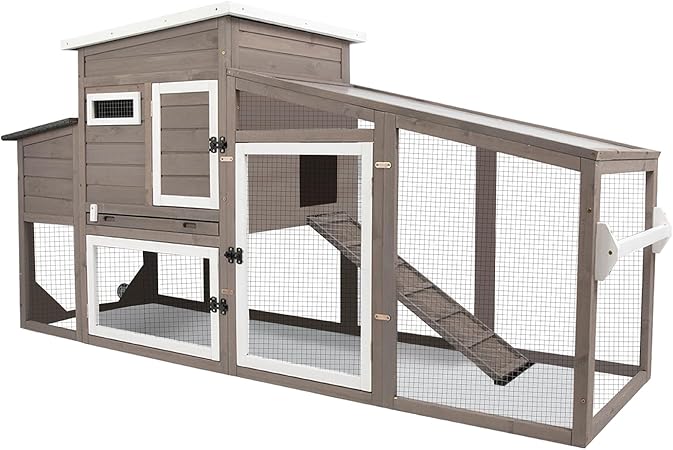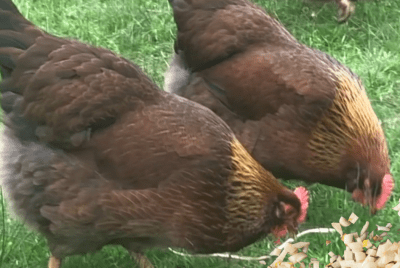Best Laying Chickens
Introduction
As someone who has always been fascinated by the world of poultry, I’ve spent a considerable amount of time exploring different breeds and their unique characteristics, especially when it comes to egg-laying capabilities. In this article, I aim to share my knowledge and experience to help you understand which chickens are the best for egg laying and how to care for them effectively.
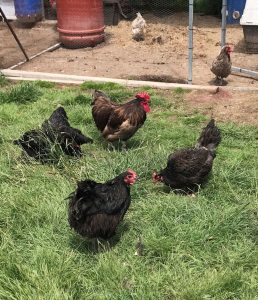
Understanding Egg-Laying Chickens
Egg-laying chickens, known for their prolific egg production, have certain characteristics that set them apart from other breeds. These include their ability to lay eggs consistently, their temperament, and their overall health and hardiness. Choosing the right breed is crucial for anyone looking to maximize egg production in their backyard flock.
General characteristics of good egg-layers
Good egg-laying chickens typically exhibit several key characteristics: they are hardy and adaptable to various environments, ensuring consistent egg production throughout the year. These breeds often have a calm and manageable temperament, making them suitable for both rural and urban settings. High productivity is a hallmark, with some laying up to 250-300 eggs annually. They usually have good foraging abilities, reducing feed costs. Additionally, these breeds often display strong immunity and resilience to common poultry diseases, ensuring a healthy, productive flock.
Importance of breed selection
Good egg-laying chickens typically exhibit several key characteristics: they are hardy and adaptable to various environments, ensuring consistent egg production throughout the year. These breeds often have a calm and manageable temperament, making them suitable for both rural and urban settings. High productivity is a hallmark, with some laying up to 250-300 eggs annually. They usually have good foraging abilities, reducing feed costs. Additionally, these breeds often display strong immunity and resilience to common poultry diseases, ensuring a healthy, productive flock.
Top Breeds for Egg Laying
Rhode Island Red
Rhode Island Reds are one of the most renowned breeds for egg laying, cherished by poultry enthusiasts worldwide. Originating from the United States, this breed is known for its hardiness, making it suitable for various climatic conditions. Rhode Island Reds are distinguished by their deep red feathers and robust build, contributing to their resilience against harsh weather and environmental stressors. They have a friendly and docile temperament, which makes them excellent choices for backyard flocks, even in family settings with children.
These chickens are prolific layers, capable of producing about 250-300 brown eggs per year. This high yield makes them a top choice for both commercial poultry farmers and backyard chicken enthusiasts. Their foraging skills are remarkable, allowing them to supplement their diet naturally, which can be a cost-effective trait for keepers. Moreover, their strong immunity and general good health minimize the need for frequent veterinary care, making them a low-maintenance and economically beneficial choice for egg production.
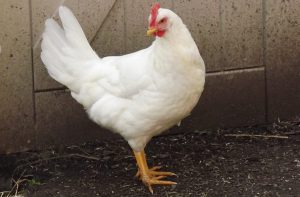
Leghorn
Leghorns, originating from Italy, are exceptionally renowned in the poultry world for their impressive egg-laying capabilities. They are particularly known for their prolific production of large, white eggs, with an average hen laying about 280-320 eggs per year. This high rate of egg production makes them a favorite among commercial egg producers and backyard chicken enthusiasts alike. Leghorns are characterized by their slender, athletic build and bright white feathers, though they also come in other colors.
One of the most striking features of Leghorns is their active and energetic nature. They are excellent foragers, which can significantly reduce feeding costs as they often find a good portion of their food themselves. This breed is also known for its hardiness and ability to adapt to a variety of environments, though they particularly thrive in warmer climates. Their independence and resourcefulness make them less demanding in terms of care, but their active nature might require more spacious living conditions. Despite their somewhat shy and skittish temperament, Leghorns are a top choice for those seeking efficient, high-volume egg producers.
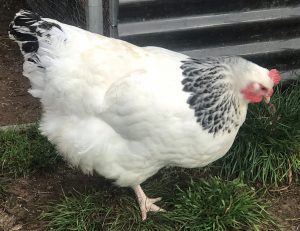
Sussex
The Sussex chicken is a versatile and cherished breed, originating from England and known for its exceptional qualities as both an egg-layer and a meat bird. Characterized by their striking plumage that comes in various colors like white, red, and speckled, Sussex chickens add not only productivity but also aesthetic appeal to a flock. They have a sturdy, robust build and a calm, friendly temperament, making them a favorite in family backyards and small farms.
Sussex chickens are reliable layers, producing about 250-270 eggs annually. Their eggs are usually large and tinted light brown, appreciated for both their size and quality. One of the most notable aspects of the Sussex breed is their adaptability to different environments, thriving in both free-range and confined settings. They are known for their good foraging abilities, which can help in reducing feed costs.
Their gentle nature makes them easy to handle and care for, and they tend to be resilient against common poultry diseases. This combination of high productivity, adaptability, and low maintenance needs makes the Sussex an ideal choice for both experienced and novice chicken keepers seeking a balance between egg production and ease of care.
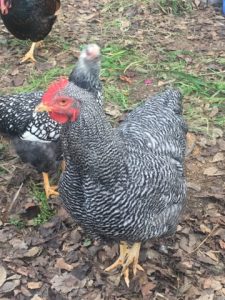
Plymouth Rock
Plymouth Rock chickens, often referred to as “Rocks,” are a beloved American heritage breed known for their distinctive barred plumage, though they also come in other colors like white and buff. They are renowned for their dual-purpose utility, being excellent for both egg production and meat. A Plymouth Rock hen typically lays around 200-250 brown eggs per year, making them a reliable choice for consistent egg supply.
One of the most appealing aspects of Plymouth Rocks is their temperament. They are known for being friendly, easygoing, and docile, which makes them ideal for families and beginner poultry keepers. Their calm nature also allows them to adapt well to confinement, although they enjoy foraging if given the opportunity. This breed is hardy, capable of withstanding various climates, and is generally healthy, with a strong resistance to common poultry ailments.
In addition to their productivity and temperament, Plymouth Rocks are valued for their longevity and continued productivity over several years, making them a sustainable choice for a long-term backyard flock. Their combination of friendly disposition, hardiness, and dependable egg-laying makes them a popular choice among chicken enthusiasts.
Australorp
Australorps, a remarkable breed originating from Australia, are globally acclaimed for their extraordinary egg-laying capabilities. This breed holds a world record for laying 364 eggs in 365 days under official tests. Typically, an Australorp hen can lay about 250-300 eggs annually, producing large, light brown eggs. Their exceptional laying ability, combined with the quality of their eggs, makes them a top choice for both backyard chicken keepers and commercial egg producers.
Australorps are characterized by their striking glossy black feathers that sometimes exhibit a greenish sheen, and they also come in blue and white varieties. They have a robust and heavy build, contributing to their hardiness in various climates. Their temperament is another winning attribute; Australorps are known for being calm, friendly, and easy to handle, making them suitable for families and novice chicken enthusiasts.
Apart from their prolific egg-laying capacity, Australorps are valued for their adaptability. They thrive in both free-range and confined spaces, showing resilience against common poultry diseases. This breed’s combination of high productivity, gentle nature, and adaptability makes it an ideal choice for those looking to maximize egg production without compromising on the ease of care and management of their flock.
Factors Affecting Egg Production
Diet and nutrition
A balanced diet is crucial for optimal egg production in chickens. High-quality commercial layer feed, rich in protein (16-18%), is essential as it provides the necessary nutrients for consistent egg laying. Calcium, critical for strong eggshells, can be supplemented with oyster shells or crushed eggshells. Access to fresh greens, vegetables, and occasional fruits enhances their diet, offering additional vitamins and minerals. Clean, fresh water is vital, as dehydration can quickly reduce egg production. Avoid overfeeding treats or scraps, as an imbalanced diet can lead to health issues and reduced egg-laying efficiency. Proper nutrition not only boosts egg production but also maintains the overall health and vitality of the chickens.
Housing and environment
The housing and environment play a significant role in the well-being and productivity of egg-laying chickens. A secure, spacious coop is essential to protect them from predators and harsh weather conditions. Inside, adequate ventilation is crucial to prevent respiratory issues, while still avoiding drafts. Nesting boxes should be comfortable and private, encouraging hens to lay eggs safely. Regular cleaning of the coop and nesting areas is vital for hygiene and disease prevention. Providing an outdoor run allows chickens to exercise, forage, and enjoy natural sunlight, essential for their physical health and egg production. A stress-free, clean, and safe environment is key to maximizing the egg-laying potential of chickens.
Health and care
Proper health care is paramount for maintaining a productive flock of egg-laying chickens. Regular health checks, including monitoring for parasites like mites and lice, and vaccinations against common poultry diseases, are crucial. Good hygiene practices, such as cleaning the coop and changing the water frequently, help prevent the spread of disease. Attention to signs of illness, such as changes in eating habits, egg production, or behavior, is important for early intervention. Providing a balanced diet, clean water, and a safe environment also contributes to their overall well-being. Consistent care and vigilance ensure the health of the chickens and the quality of the eggs they produce.
Pros and Cons of Each Breed
Rhode Island Red: Pros and Cons
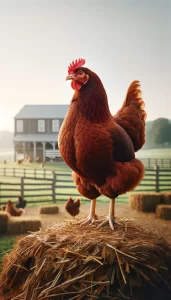
Pros:
Exceptional Egg Production: Rhode Island Reds are known for their prolific egg-laying capabilities, producing approximately 250-300 brown eggs annually. This high yield makes them ideal for both personal and commercial purposes.
Hardiness and Adaptability: These chickens are remarkably hardy, able to thrive in a variety of climatic conditions. Their adaptability makes them suitable for a wide range of geographical locations.
Friendly Temperament: Generally, they have a friendly and docile nature, making them a popular choice for families and beginner chicken keepers. Their approachable demeanor allows for easier handling and care.
Disease Resistance: They possess a strong immunity to common poultry diseases, reducing the need for frequent veterinary interventions and ensuring a healthy flock.
Cons:
Potential for Aggression: Some Rhode Island Reds can show signs of aggression, particularly in more confined spaces or when in competition with flock mates.
Space Requirements: They thrive best when they have ample space to forage and explore. Limited space can lead to stress and reduced egg production.
Feather Care in Extreme Climates: In very cold or hot climates, their feathers may require additional care to prevent damage or loss, which can affect their overall health and egg-laying abilities.
Diet Sensitivity: They may require a more carefully managed diet to maintain optimal health and egg production, as they can be prone to obesity or nutritional deficiencies if not properly fed.
Leghorn: Pros and Cons
Pros:
High Egg Production: Leghorns are celebrated for their prolific egg-laying abilities, producing an impressive 280-320 white eggs per year. This makes them a top choice for serious egg producers.
Efficient Foragers: Their active nature makes them excellent foragers, significantly reducing the cost of feed as they can source much of their diet naturally.
Adaptability to Climates: They are hardy birds, capable of adapting well to various environments, particularly thriving in warmer climates.
Low Maintenance: Due to their independence and resourcefulness, they require less intensive care, making them a good option for those with limited time.
Cons:
Skittish Temperament: Leghorns can be shy and skittish, which might make them less suitable for families with small children or for those who prefer more interactive pets.
Space Requirements: Their active and energetic nature means they need ample space to roam and exercise, which may not be feasible in more confined settings.
Climate Sensitivity: While hardy, they tend to prefer warmer climates and might require additional care in colder environments to maintain optimal health and egg production.
Egg Fragility: Their eggs can sometimes be more fragile than those of other breeds, requiring careful handling and collection to prevent breakage.
Sussex: Pros and Cons
Pros:
Versatile Egg and Meat Production: Sussex chickens are valued for their dual-purpose qualities, producing about 250-270 large, light brown eggs annually, while also being suitable for meat production.
Adaptability: They adapt well to various environments, thriving in both free-range and more confined spaces, making them suitable for diverse types of poultry keepers.
Temperament: Sussex chickens are known for their calm and friendly nature, which makes them easy to handle and a good choice for families.
Attractive Appearance: Their beautiful plumage, available in multiple colors like white, red, and speckled, adds aesthetic value to a flock.
Cons:
Space Requirements: While adaptable, they do best with sufficient space to roam and forage, which might be challenging in urban settings.
Predator Attraction: Due to their size and colorful plumage, they might be more noticeable to predators, requiring more secure housing.
Feathering Care: Particularly in the speckled variety, their feathers may require extra care to maintain their appearance and health.
Broodiness: Sussex hens can sometimes become broody, impacting their egg production. This trait requires management to ensure continuous egg laying.
Plymouth Rock: Pros and Cons
Pros:
Consistent Egg Production: Plymouth Rock hens are reliable layers, producing about 200-250 medium to large brown eggs annually, making them a steady source of eggs for households.
Friendly and Docile: Known for their calm and friendly nature, these chickens are well-suited for families and are easy to handle, which is great for beginner poultry keepers.
Hardiness: They are robust and can thrive in various climates, making them suitable for different environmental conditions.
Dual-purpose Breed: Besides being good egg layers, they are also valued for their meat, making them a versatile choice for small farms and homesteads.
Cons:
Space Needs: While adaptable, they prefer to have space to roam and forage, which might be challenging in more confined urban spaces.
Feathering: Their distinctive feathers may require additional care to keep them in good condition, especially in muddy or wet environments.
Predator Risk: Due to their size and temperament, they can be at risk from predators, necessitating secure and protective housing.
Lower Egg Production in Winter: Their egg production might slightly decrease during the colder months, requiring additional care and management to sustain production levels.
Australorp: Pros and Cons
Pros:
Exceptional Egg Production: Australorps are world-renowned for their egg-laying prowess, typically producing 250-300 large, light brown eggs per year. Their record-breaking laying capabilities make them a top choice for high egg yield.
Adaptable and Hardy: These chickens are robust and adaptable to various climates, ensuring consistent productivity in different environmental conditions.
Gentle and Friendly Temperament: Known for their calm and easygoing nature, Australorps are ideal for families and beginner chicken keepers, offering a pleasant interaction experience.
Attractive Appearance: With their glossy black plumage, often showing a greenish sheen, they add beauty and elegance to any flock.
Cons:
Space Requirements: To maintain their health and egg production, Australorps benefit from having ample space to roam and forage.
Heat Sensitivity: In extremely hot climates, they may require additional care to prevent overheating due to their dark feathers.
Broodiness Tendency: Australorps can occasionally become broody, which might interrupt their egg-laying cycle, requiring careful management.
Feather Maintenance: Their beautiful black feathers can require extra care to maintain their luster, especially in muddy or dusty conditions.
Care Tips for Maximum Egg Production

Feeding
To maximize egg production, proper feeding is essential. A balanced diet is key:
Layer Feed: Provide high-quality commercial layer feed, which typically contains around 16-18% protein, essential for egg production. This should be the mainstay of their diet.
Calcium Supplements: Ensure adequate calcium intake for strong eggshells by offering oyster shell or crushed eggshells as a supplement.
Green Vegetables and Grains: Incorporate fresh greens like spinach, kale, and grains for added nutrients. These can be given as treats and should not exceed 10% of their diet.
Consistent Feeding Schedule: Feed chickens at regular intervals to maintain a consistent laying routine. Avoid overfeeding, as obesity can hinder egg production.
Clean, Fresh Water: Always provide access to clean, fresh water, as dehydration can rapidly decrease egg production.
Treats in Moderation: Offer treats like mealworms or scratch grains sparingly. While they enjoy these, too much can unbalance their diet.
Avoid Toxic Foods: Be aware of foods that are harmful to chickens, like avocado, chocolate, and raw beans.
Adhering to these feeding guidelines will help maintain the health and productivity of your egg-laying chickens.
Housing
Effective housing is critical for healthy, productive chickens. Here are key elements:
Secure Coop: Protect chickens from predators and harsh weather. Ensure the coop is sturdy, with secure locks.
Adequate Space: Provide enough space for each chicken to move freely. Crowded conditions can stress chickens, reducing egg production.
Ventilation: Good air circulation is vital to prevent respiratory problems, but avoid drafts.
Nesting Boxes: Offer one nesting box for every three to four hens. Ensure these are comfortable, private, and kept clean.
Perches: Install perches for roosting, which is essential for their natural behavior.
Cleanliness: Regularly clean the coop to prevent disease and parasites. Change bedding frequently.
Outdoor Access: If possible, provide an outdoor run for sunlight and exercise, crucial for their overall health and egg-laying efficiency.
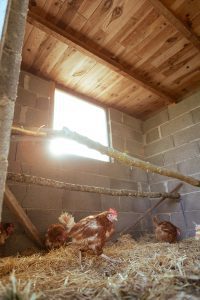
Health checks
Regular health checks are vital to ensure the well-being of egg-laying chickens:
Parasite Control: Routinely check for and treat parasites like mites and lice. Dust baths can help prevent infestations.
Vaccinations: Keep up with recommended vaccinations to protect against common poultry diseases.
Observation: Daily observe chickens for signs of illness, such as lethargy, abnormal droppings, or changes in eating or laying habits.
Beak and Nail Care: Trim beaks and nails if they become overgrown, as this can affect feeding and mobility.
Clean Environment: Maintain a clean coop to prevent disease. Regularly change bedding and clean feeders and waterers.
Nutrition: Monitor their diet to ensure they receive all necessary nutrients for good health.
Isolation of Sick Birds: Isolate any sick birds immediately to prevent the spread of illness.
These proactive health measures can help maintain a healthy flock and consistent egg production.
Common Challenges and Solutions
Dealing with predators
Health issues
Regular health checks are vital to ensure the well-being of egg-laying chickens:
Parasite Control: Routinely check for and treat parasites like mites and lice. Dust baths can help prevent infestations.
Observation: Daily observe chickens for signs of illness, such as lethargy, abnormal droppings, or changes in eating or laying habits.
Beak and Nail Care: Trim beaks and nails if they become overgrown, as this can affect feeding and mobility.
Clean Environment: Maintain a clean coop to prevent disease. Regularly change bedding and clean feeders and waterers.
Nutrition: Monitor their diet to ensure they receive all necessary nutrients for good health.
Isolation of Sick Birds: Isolate any sick birds immediately to prevent the spread of illness.
These proactive health measures can help maintain a healthy flock and consistent egg production.
Environmental factors
Environmental factors significantly impact the health and productivity of egg-laying chickens:
Climate Control: Ensure the coop is well-insulated against extreme temperatures. Provide shade and ventilation for hot weather, and insulation or heat sources for cold climates.
Space and Enrichment: Adequate space and environmental enrichment, like perches or dust baths, reduce stress and encourage natural behaviors.
Predator Protection: Secure the coop and run against predators. Use predator-proof fencing and lockable doors.
Cleanliness: Regular cleaning reduces disease risk. Remove droppings and refresh bedding frequently.
Access to Nature: Allowing chickens to forage outdoors provides mental stimulation and nutritional variety, promoting overall well-being.
Noise and Stress Reduction: Minimize loud noises and disturbances to prevent stress, which can affect egg production.
Careful management of these environmental factors ensures a healthy, productive environment for egg-laying chickens.
Sustainable Practices in Raising Chickens
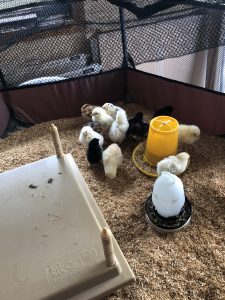
Adopting sustainable practices in raising chickens contributes to both environmental health and the welfare of the birds:
Eco-friendly Coops: Use recycled or sustainably sourced materials for coop construction.
Organic Feeding: Opt for organic, non-GMO feed to promote natural growth and reduce chemical intake.
Composting: Compost chicken manure and bedding material to create rich soil for gardens.
Water Conservation: Implement rainwater harvesting systems for chicken water needs.
Natural Pest Control: Utilize chickens’ foraging behavior to control pests in gardens or farms, reducing the need for chemical pesticides.
Renewable Energy: Consider solar-powered lighting or heating for the coop.
Rotation Grazing: Rotate chicken grazing areas to prevent land degradation and maintain soil health.
These sustainable practices not only benefit the environment but also ensure the health and productivity of the chickens.
Ethical considerations
Ethical considerations in chicken keeping focus on ensuring the welfare and humane treatment of the birds:
Adequate Space: Provide sufficient space for chickens to move, forage, and exhibit natural behaviors.
Proper Nutrition: Ensure a balanced diet and constant access to fresh water.
Humane Handling: Treat chickens gently and with respect, avoiding rough handling or stressful situations.
Health Care: Promptly address any health issues and provide regular veterinary care.
Natural Living Conditions: Offer an environment that allows for natural behaviors like dust bathing, perching, and foraging.
Avoiding Overcrowding: Overcrowding can lead to stress, aggression, and disease. Maintain a healthy flock density.
Considerate Culling Practices: If necessary, practice humane culling methods that minimize suffering.
Adhering to these ethical principles ensures the chickens lead a healthy, stress-free life, which is not only humane but also positively impacts their productivity.
Environmental impact
The environmental impact of chicken keeping can be significant, but with mindful practices, it can be minimized:
Manure Management: Properly managed chicken manure is an excellent fertilizer, reducing the need for chemical fertilizers.
Reducing Feed Miles: Opt for locally sourced feed to lower transportation emissions.
Sustainable Feed Production: Choose feeds produced sustainably to lessen the impact on natural resources.
Water Usage: Implement efficient water systems to reduce waste.
Biodiversity: Chickens can help maintain ecosystem balance by controlling pests naturally.
Recycling Waste: Kitchen scraps can be fed to chickens, reducing food waste.
Low Carbon Footprint: Backyard chickens often have a lower carbon footprint compared to commercial egg production.
By adopting these environmentally friendly practices, chicken keepers can contribute to sustainability while enjoying fresh eggs and the companionship of their flock.
Community and Support
Joining poultry clubs
Joining poultry clubs offers invaluable benefits for chicken enthusiasts:
Shared Knowledge: Members often have a wealth of experience and can offer advice on chicken care, health issues, and best practices.
Networking Opportunities: Clubs provide a platform to connect with fellow poultry keepers, facilitating the exchange of ideas and experiences.
Access to Resources: Many clubs provide access to resources like breeding stock, equipment, and educational materials.
Learning Opportunities: Clubs often organize workshops, seminars, and field trips, offering learning opportunities about various aspects of poultry keeping.
Community Events: Participate in local shows, competitions, and community events, which can be both educational and enjoyable.
Support System: Having a community to turn to in times of need or uncertainty can be immensely reassuring, especially for new chicken keepers.
These clubs foster a sense of community and support, enhancing the overall experience of raising chickens.
Online forums and resources
Online forums and resources are a treasure trove for chicken keepers:
Expert Advice: Access to experienced poultry keepers and experts who can provide guidance on various aspects of chicken care.
Problem Solving: Share challenges and receive practical solutions from a global community.
Up-to-Date Information: Stay informed about the latest trends, research, and best practices in poultry keeping.
Community Support: Engage with a supportive online community for encouragement and sharing successes.
Resource Library: Access a wide range of articles, how-to guides, and instructional videos.
Marketplace: Many forums include marketplaces for buying and selling chickens, equipment, and feed.
Event Information: Learn about upcoming poultry-related events, webinars, and online courses.
These online platforms are invaluable for both novice and experienced chicken keepers, providing a vast array of information and support at your fingertips.
Personal Experiences and Stories
Anecdotes from personal journey
Sharing personal experiences in chicken keeping adds a relatable and educational aspect:
Learning Curve: My initial challenges in understanding the specific needs of different breeds and how I overcame them.
Success Stories: Celebrating milestones like the first egg or successfully treating a sick chicken, which were immensely rewarding.
Trial and Error: Experimenting with different feeds and housing setups to find what works best, highlighting the importance of adaptability.
Community Engagement: How joining a local poultry club enhanced my knowledge and provided a sense of belonging.
Surprising Discoveries: Unanticipated behaviors and traits observed in my chickens, offering insights into their personalities and group dynamics.
Sustainable Practices: My journey towards implementing more sustainable and ethical practices in chicken keeping.
These anecdotes from personal experience can inspire, educate, and resonate with fellow chicken enthusiasts.
Learning from mistakes
Learning from mistakes is a pivotal aspect of chicken keeping:
Underestimating Predator Risks: Early on, I underestimated predator threats, leading to losses. Reinforcing the coop taught me the importance of robust security.
Overcrowding: Initially, I overcrowded my coop, causing stress and pecking among the chickens. Learning about proper space requirements was crucial.
Neglecting Health Checks: Missing early signs of illness once led to a spread of disease. Regular health checks became a priority.
Inadequate Nutrition: I learned the hard way that a balanced diet is key for health and egg production after initially giving too many treats.
Ignoring Environmental Factors: Failing to provide adequate shade and ventilation initially impacted my chickens’ comfort and productivity, emphasizing the importance of a suitable environment.
These lessons, learned through mistakes, significantly improved my chicken keeping practices.
Conclusion
Recap of key points
In conclusion, choosing the best egg-laying chickens involves considering breeds like Rhode Island Reds, Leghorns, Sussex, Plymouth Rocks, and Australorps, each with their unique pros and cons. Key factors such as diet and nutrition, suitable housing and environment, and regular health checks play a crucial role in maximizing egg production. Embracing sustainable practices and ethical considerations are essential for responsible chicken keeping. Engaging with the community through poultry clubs and online resources offers invaluable support and knowledge. Personal experiences and learning from mistakes enrich this journey, making chicken keeping not only productive but also deeply rewarding and educational.
Encouragement for aspiring chicken keepers
To aspiring chicken keepers: embarking on this journey is both rewarding and enlightening. Each breed offers unique characteristics and joys, and the satisfaction of collecting fresh eggs is unparalleled. While challenges may arise, they are opportunities for growth and learning. Embrace the community – both local and online – for invaluable advice and support. Remember, every seasoned chicken keeper started as a novice, learning through experience. With dedication, patience, and care, you’ll not only provide a nurturing environment for your chickens but also enjoy the myriad benefits they bring. Dive into this fulfilling endeavor; the joys of chicken keeping await!
FAQs
FAQ 1: What is the best chicken breed for beginners? Answer: The Rhode Island Red and Plymouth Rock are excellent choices for beginners due to their hardiness, friendly temperament, and consistent egg production.
FAQ 2: How many eggs can I expect from a good laying breed? Answer: Breeds like Leghorns and Australorps can produce 250-300 eggs per year, depending on factors like diet, environment, and overall health.
FAQ 3: How much space do chickens need in the coop? Answer: Each chicken requires at least 2-3 square feet inside the coop and about 8-10 square feet in an outdoor run. More space can reduce stress and improve health.
FAQ 4: What should I feed my egg-laying chickens? Answer: A balanced layer feed with 16-18% protein is essential. Supplement with calcium for shell strength and provide greens or vegetables for extra nutrients.
FAQ 5: How do I protect my chickens from predators? Answer: Secure the coop with predator-proof hardware cloth, lock doors at night, and consider guardian animals like dogs. Regularly inspect the coop for potential vulnerabilities.







